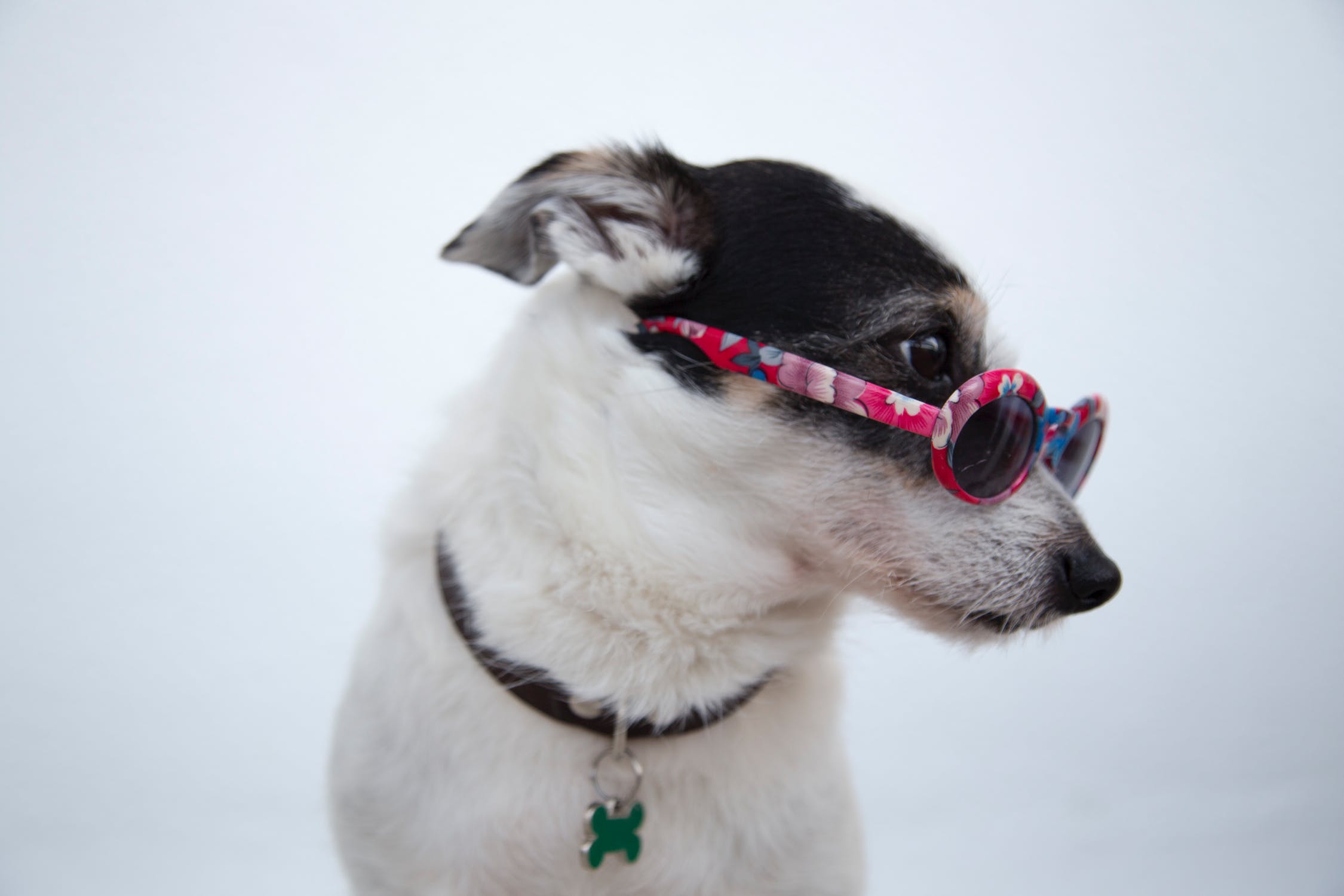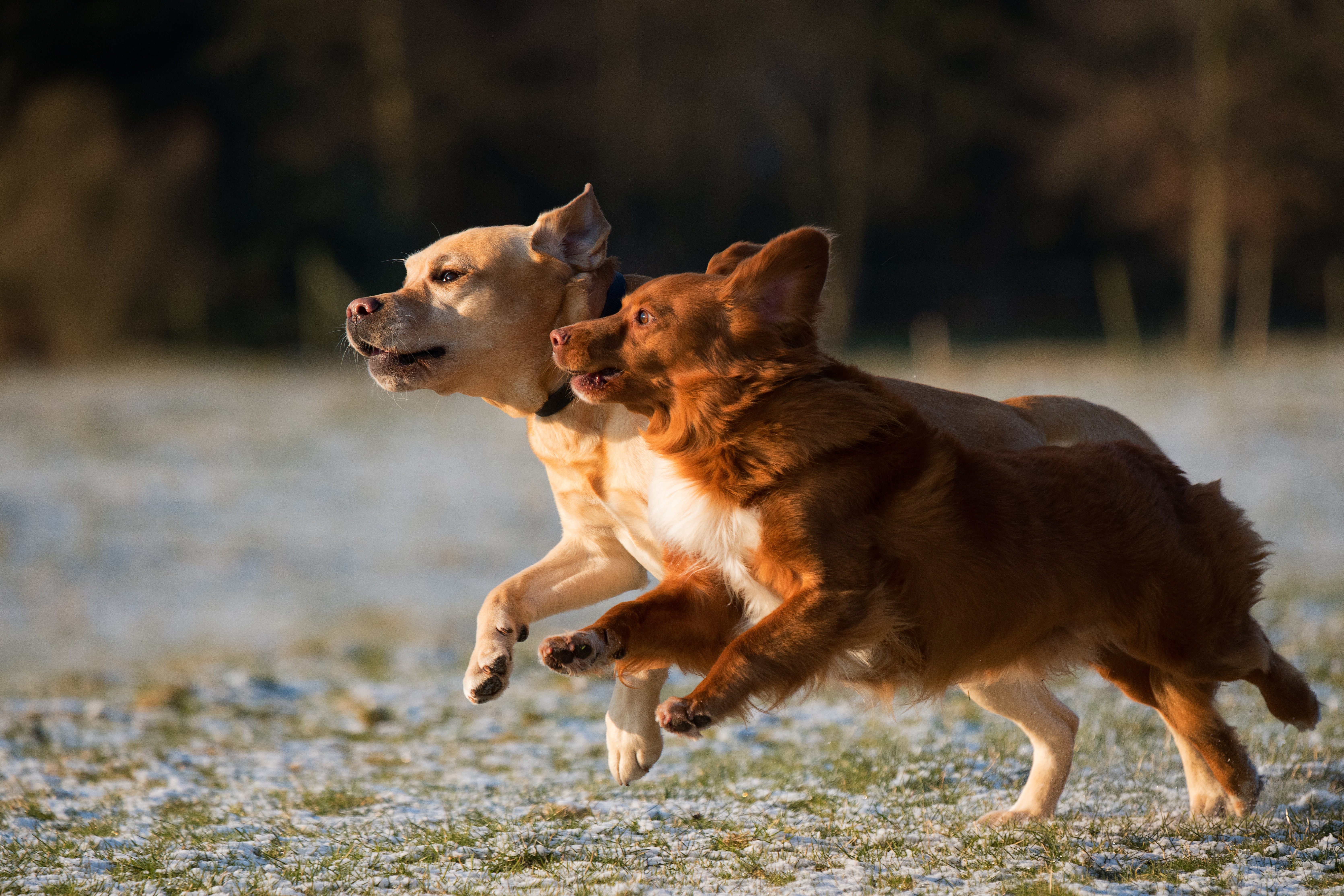

Noise Phobias in Dogs and Cats

Summertime in Australia is almost synonymous with thunderstorms. Many dogs and cats find the experience of thunderstorms terrifying, especially if they live outdoors. The festive season also comes with it firework displays and noisy parties which may stress out pets due to the increase in noise around the house and the disruption to the normal day-to-day routine. While most pets are able to cope with these short term changes, many pets have underlying anxiety or noise phobias and exhibit signs of stress which can easily go unnoticed.
Fear or phobia?
Dogs and cats can experience phobias in a similar way to humans. Just like how you or I might have a phobia to heights or creepy crawlies, our pets can have phobias to loud and unfamiliar noises such as fireworks, thunderstorms or even visitors. Fear is a normal physiological, emotional and behavioural response to something that may pose a threat of harm like a loud, unfamiliar sound for example. On the other hand, a phobia is an exaggerated fear response to a stimulus that often results in the animal attempting to avoid or escape from it. This irrational, intense and persistent fear response can develop at any age and in any breed of dog. Dogs are more commonly attributed to displaying this behaviour of escalating levels of anxiety and fear, sometimes even resulting in destructive behaviour or self-trauma. Luckily for us, the signs of an anxious pet are easy to spot if you know what you are looking for.
What Are the Signs of Anxiety?
Just like us, animals behave differently when stressed or anxious. Humans get sweaty palms, nauseous, increased respiratory rates, cold sweats and pace back and forth. Dogs and cats, on the other hand, display slightly different signs to us when it comes to anxiety. Signs of anxiety include:
- Pacing or restlessness
- Dilated pupils
- Panting
- Trembling
- Drooling, lip licking
- Hiding or cowering
- Attention seeking – sitting close by, leaning, trying to climb on people
- Destructive behaviour – chewing, digging, clawing at doors
- Trying to escape
It is important to remember that although dogs tend to show more obvious signs of anxiety and are more likely to be destructive, cats can also experience anxiety from noise phobias too. The difference is that cats tend to either hide or jump the fence and hide out of sight so their owners often don’t notice it.
Never punish the behaviour
You should never punish your pet for any anxious or destructive behaviour no matter how bad. Punishment only serves to increase a pet’s anxiety and fear in the situation. Contrary to some opinions, you cannot “reinforce” a fear by comforting them. Take this scenario for example: you are with your trusted friend about to walk across a tall bridge but you are afraid of heights. You start feeling anxious so you reach out and clutch their hand for reassurance. But they push you away and start crossing the bridge without you, ignoring your pleas for assistance. Do you think that would make you more or less anxious about the situation? On the other hand, what if they held your hand and talked to you in a calming voice while giving you words of encouragement and walked across the bridge together with you? It’s pretty obvious that by being calm and reassuring, the trusted friend is more likely able to help you cope with your fear of heights rather than make you more fearful of heights. Similarly, our pets will often seek us out for comfort and reassurance when they are feeling anxious during a thunderstorm or fireworks. When they do, we should reassure them and make them feel safe.
What to do if your pet has a noise phobia
Now that you know the signs of anxiety to look out for and what not to do, let’s discuss some ways to manage your pet’s anxiety and relieve some of that stress.
Get in early
The best solution to the problem is prevention. If you notice your pet becoming anxious during thunderstorms, fireworks or other loud noises from a young age, the best thing you can do is discuss it with your vet and begin behaviour modification therapy early. People often think that their pet will “grow out of it” or “get used to it” over time when, in reality, the exact opposite is true. The fear response to phobias tend to escalate over time with each repeated exposure and can result in potentially traumatic consequences.
Plan ahead
Prepare, prepare, prepare. Thunderstorms and fireworks are usually most frequent over the summer months and during any festive events but especially on New Year’s Eve. It is important to start preparing your pet for these events in the months leading up to them. Start getting your pet used to their ‘den’ space (see create a safe retreat below) so that they are relaxed and familiar with it when the time comes to use it. Monitor weather forecasts so that if a thunderstorm is expected, you can bring your pet inside if possible. Make plans for your pet to be somewhere secure over New Year’s Eve if you are not going to be home. Some owners will even board their animals in a location away from fireworks to ensure that their pet is secure and that there will be minimal triggers. It’s also a good time to check that your pet’s microchip details are up to date so that in the event that they do escape you can be notified.
Noise management
As much as possible, try to reduce exposure to the noise stimuli. If possible, bring your pet indoors, close your windows and draw curtains or blinds to reduce some of the noise and the flash of lightning. Turning up the volume on the TV or playing music with a rhythmic, heavy bass can help drown out the rumble of thunder or bang of fireworks for some pets. If your pet has a crate, then throwing some thick blankets over the crate can help provide some extra sound proofing.
Keep your cool
If your pet is acting more clingy, it means they are looking to you for reassurance. Dogs and cats respond to our body language and emotional response to situations. So, it is imperative that we remain calm and convey that in our body language too. As mentioned previously, talking to your pet in a soothing voice and calmly stroking them can help reduce their anxiety in a stressful situation. Some pets find close physical contact with their human soothing so if possible, allow them to rest against you. A Thunder Jacket can be used to apply a gentle constant pressure to the torso which can have a calming effect on some pets.
Create a safe retreat
While most cats will be able to find a hiding spot under the bed, dogs may need you to provide them with a makeshift den to feel safer. This might mean giving them access to a dark cupboard or allowing them to hide under blankets if that’s what they prefer. Kit the den out with clothing which has your scent on it, their favourite treats or appropriate chew toys to help reduce stress. The key is to provide them with space that they can retreat to where they feel safe and secure.
Pheromone therapy
The use of pheromones such as Feliway for cats and Adaptil for dogs can help promote a sense of calm. Use them in your pet’s hiding place or den during thunderstorms or fireworks. They are available in diffusers, collars and sprays to suit a range of situations. Pheromones are useful to help reduce stress from noises and also for a range of different stressful situations.
Medication
Sometimes, despite your best efforts, it can be extremely difficult to manage your pet once they have developed a phobia to a certain noise. It is always useful to discuss your pet’s situation with a veterinarian to get advice specific for your pet’s needs. In mild cases your veterinarian may recommend the use of anxiety-reducing supplements or diets. These have best results when used on a daily basis. In more severe cases, your vet may recommend the use of prescription medication together with behaviour modification therapy to give your pet relief from phobias and significantly improve their quality of life.
Thunderstorms, fireworks and loud noises can certainly be scary things for our four-legged companions, but there are many strategies we can implement to help reduce their fear. Early intervention and finding the right combination of techniques for your pet is the key to helping you both enjoy the summer months.
For more resources on managing thunderstorm phobias, we recommend visiting the following pages:
www.iahcf.com/wp-content/uploads/2014/02/Thunderstorm-Phobia-in-Dogs-IAHCF-10-16-17.pdf
www.drsophiayin.com/blog/entry/storm-sangria-a-calming-cocktail-for-your-storm-fearful-dog


